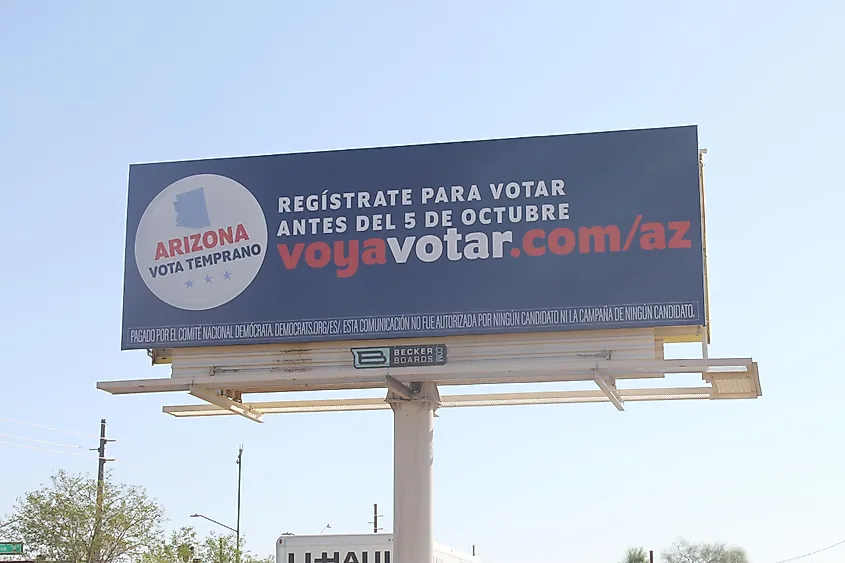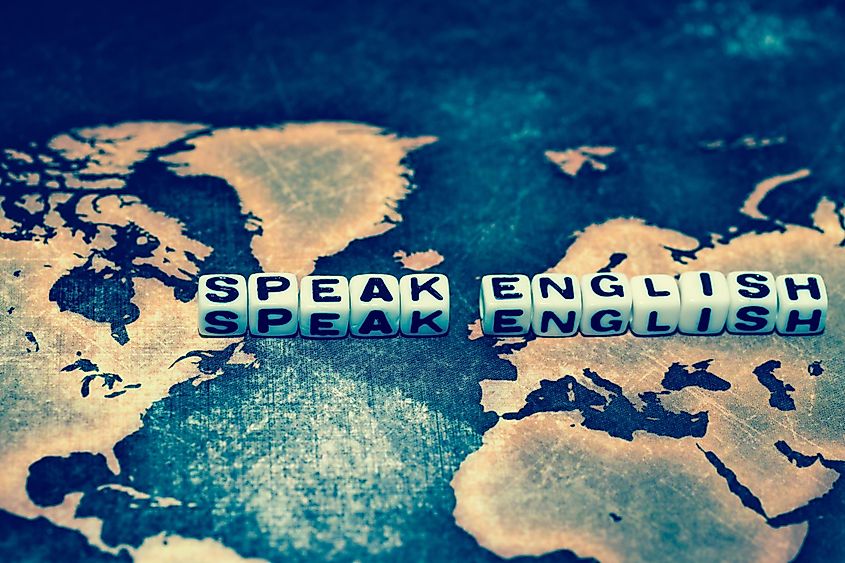What Is The Official Language Of The United States?

- The United States has no official language.
- English is spoken by the overwhelming majority of Americans.
- Spanish is the second-most spoken language in the US after English.
- At least 350 languages are spoken in the US today.
It is generally known that the overwhelming majority of people in the United States speak English. But would it surprise you to know that English is not the country’s official language? Actually, the US is one of just a handful of countries that do not have an official language.
Most countries have an official language that is specified as such in law. Many countries specify the official language(s) in their constitutions. But in the US, neither the constitution nor any federal law specifically states that English is the official language of the country. Therefore, the country has no official language.
The American Language Melting Pot
Today, the US is home to approximately 331 million people, of which 300 million, or roughly 90% of the population, speak English. But millions of Americans also speak other languages. In fact, the US is home to speakers of at least 350 languages in total. Spanish is the second most spoken language in the US after English, and other languages with millions of speakers include Chinese, Tagalog (the national dialect of the Philippines), Vietnamese, and French (including French Creole).
A History Of Multilingualism
What became the United States was multilingual long before the country was founded. In fact, before the arrival of Europeans in North America, at least 300 languages were spoken by Indigenous peoples in what is now the US and Canada. When Europeans began arriving and settling in what became the US, they of course brought their mother tongues with them.

On the eve of American independence in 1776, English was the most dominant language in the original 13 colonies that would form the United States of America, but many of the colonies’ residents also spoke French, German, and Dutch. Indeed, one reason that the founding fathers of the United States did not proclaim English as the official language of the new country was that they did not want to offend those who fought for independence but were not native English speakers. The founding fathers also did not believe that the English language needed any protection under the law.
As the US expanded its territory and welcomed new immigrants, more languages became part of the fabric of American culture. Spanish, for example, would become a common language in the US with the addition of territories formerly belonging to Mexico and Spain. Despite a history of multilingualism, however, the US also has a history of trying to impose the English language on allophones, both domestic and foreign.
Suppression Of Non-English Languages
Although the US has never adopted English as its official language, the country does have a history of trying to suppress other languages. For example, there was a concerted effort by US authorities to suppress and eliminate the languages of Indigenous Americans. Many Indigenous children were placed in government-run boarding schools, where they were educated only in English. In fact, they were often punished if they spoke their languages. Slaves brought to the US from Africa were also forbidden from speaking their own languages.

It was the 20th century that saw the most widespread efforts to discourage the use of non-English languages in the US. During World War I, for instance, some states made it illegal for people to speak German, and laws were passed that discouraged the use of non-English languages in general. Following WWI, English-only laws were passed throughout different US states, and people speaking languages other than English were routinely punished. In 1924, during a period of American isolationism, a new immigration act was passed restricting the arrival of new immigrants from non-Anglophone countries and putting an outright ban on immigrants from Asia. It was not until 1965 that US immigration policy changed to remove restrictions on newcomers from non-English-speaking countries. This policy change, however, had the effect of making some Americans fear that the English language was in danger as people speaking other languages again began streaming into the US.
In the late 20th century, there were several attempts made at both the federal and state level to enforce the use of English and discourage the use of other languages. In 1981, for example, a US senator tried to introduce an amendment to the constitution that would have made English the official language of the country, but it ultimately failed. Several states did, however, successfully pass English-only laws during the 1980s and 1990s.
The Language Debate Continues
As recently as 2006, a bill was introduced in the House of Representatives to make English the official language of the US, but it was unsuccessful. Nevertheless, more than half of US states have laws on the books that make English an official language. Some Americans, however, have embraced multilingualism. Three US states, Hawaii, South Dakota, and Alaska, have even given official status to non-English languages. Clearly, the issue of whether or not English should be the official language of the US continues, unabated, to this day.











